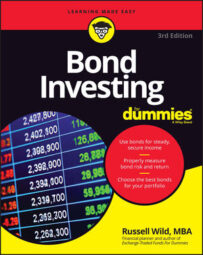A bond is really not much more than an IOU with a serial number — you lend someone your money for a period of time, and they promise to pay you back (with interest) after that time is over. There is money to be made in bond investments, but before you wade into that ocean, here are some of the basic concepts and vocabulary you need to know.
Risk equals reward
Bonds aren't insured by the FDIC the way bank CDs are. When you fork over your money to buy a bond, your principal, in most cases, is guaranteed only by the issuer of the bond. That "guarantee" is only as solid as the issuer itself, and the interest rate paid is generally based on the stability and financial strength of the bond issuer.
Riskier bonds pay some kind of risk premium, yielding higher rewards. That's why U.S. Treasury bonds (not very risky) pay one interest rate, General Electric bonds (slightly riskier) pay another rate, and Sprint Nextel bonds (quite risky) pay yet another rate. Bonds that carry a relatively high risk of default are commonly called high-yield or junk bonds. bonds issued by companies and governments that carry very little risk of default are commonly referred to as investment-grade bonds.
The maturity rate
Almost all bonds are issued with life spans (maturities) of up to 30 years. Few people are interested in lending their money for longer than that. In bond lingo, bonds with a maturity of less than 5 years are called short-term bonds, bonds with maturities of 5–12 years are called intermediate-term bonds, and bonds with maturities of 12 years or longer are called long-term bonds. In general, the longer the maturity, the greater the interest rate paid.
Cutting maturity short
A bond that is callable can be retired by the company or municipality prior to the bond's maturity. Because bonds tend to be retired when interest rates fall, you don't want your bond to be retired; you generally aren't going to be able to replace it with anything paying as much. Because of the added risk, callable bonds tend to carry higher coupon rates to compensate bond buyers.
Diversification
Some people invest in bonds as a steady source of income, but a far better reason to own bonds is to diversify a portfolio. Bonds tend to zig when stocks zag, and vice versa. The key to successful investing is to have several different asset classes — different investment animals with different characteristics — all of which can be expected to yield positive long-term returns but that do not all move up and down together.
Taxes
Back in the early days of the bond market in the United States, the federal government made a deal with the cities and states: You don't tax our bonds, and we won't tax yours. And, so far, all parties have kept their word. When you invest in U.S. Treasury bonds, you pay no state or local tax on the interest. And when you invest in municipal (muni) bonds, you pay no federal tax on the interest.
Accordingly, muni bonds pay a lower rate of interest than equivalent corporate bonds (the interest from which is taxed), but you may still wind up ahead after taxes.

